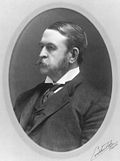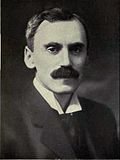Top Qs
Timeline
Chat
Perspective
1914 Ontario general election
Canadian provincial election From Wikipedia, the free encyclopedia
Remove ads
The 1914 Ontario general election was the 14th general election held in the province of Ontario, Canada. It was held on June 29, 1914, to elect the 111 Members of the 14th Legislative Assembly of Ontario (MLAs).[1]
The Ontario Conservative Party, led by Sir James P. Whitney, won a fourth consecutive term in government. Whitney died three months after the election and was succeeded by William Howard Hearst. The Conservatives contested 109 of the 111 ridings, deciding not to have candidates stand in Glengarry (where the Liberal Hugh Munro was acclaimed) and Norfolk North (where the Liberal incumbent Thomas Robert Atkinson was up against a Liberal anti-Temperance candidate).[2] However, dissension within the Tory ranks resulted in a significant number of them campaigning as either independent or temperance candidates.[2]
The Ontario Liberal Party, led by Newton Rowell, formed the official opposition.
Independent Labour MLA Allan Studholme was re-elected in Hamilton East. He had held the seat since a 1906 by-election.
The campaign was seen to turn more significantly on the matter of Regulation 17 (which limited instruction in French-language Catholic separate schools), in comparison to temperance issues, and that worked against the Liberals,[3] who placed Prohibition of sales in bars and clubs as a main plank in their platform.[4]
Remove ads
Expansion of the Legislative Assembly

An Act passed prior to the election expanded the number of members from 106 to 111, and the number of ridings from 103 to 107.[5] The following changes were made:
- Windsor was spun off from Essex North
- Monck was merged with Lincoln, and St. Catharines was withdrawn
- Niagara Falls was withdrawn from Welland
- Cochrane was carved out from Timiskaming
- In Bruce County, the three ridings were reorganized:
- The Township of Kinloss was withdrawn from Bruce South
- Bruce North gained the Township of Elderslie, while those of Bruce and Saugeen were withdrawn
- As a consequence, Bruce Centre was reconstituted as Bruce West
- In Victoria County, Victoria East and Victoria West were reorganized into Victoria North and Victoria South
- In Toronto, the ridings of Toronto East, Toronto North, Toronto South and Toronto West were replaced:
- Toronto Northeast, Toronto Northwest, Toronto Southeast and Toronto Southwest were constituted as two-member constituencies
- Parkdale and Riverdale were created as single-member constituencies
The Patricia Portion acquired in 1912 was divided between Cochrane and Kenora.
Remove ads
Results
Summarize
Perspective
Synopsis of results
- order is as given in EO reports
- = open seat
- = turnout is above provincial average
- = winning candidate was in previous Legislature
- = incumbent had switched allegiance
- = previously incumbent in another riding
- = not incumbent; was previously elected to the Legislature
- = incumbency arose from byelection gain
- = incumbency arose from prior election result being overturned by the court
- = other incumbents renominated
- = joint Conservative candidate
- = Prohibition candidate
- = joint Liberal candidate
- = previously an MP in the House of Commons of Canada
- = multiple candidates
Analysis
Results summary by region
MLAs elected by region and riding
Party designations are as follows:
Conservative
Liberal
Labour
Italicized names indicate members returned by acclamation.
|
Northern Ontario Ottawa Valley Saint Lawrence Valley Georgian Bay |
Central Ontario Wentworth/Halton/Niagara Midwestern Ontario |
Southwestern Ontario Peel/York/Ontario Toronto
|
Reorganization of ridings
The newly created ridings returned the following MLAs:
Seats that changed hands
- Gustave Évanturel (Prescott) was originally elected as a Liberal in 1911.
- James Arthur Mathieu (Rainy River) campaigned as a Conservative and won.
There were 20 seats that changed allegiance in the election:
|
Liberal to Conservative
Liberal to Independent-Liberal Liberal-Conservative to Conservative |
Conservative to Liberal
Conservative to Liberal-Temperance
|
Acclamations
When nominations closed, three candidates were acclaimed.[2] A later withdrawal in Kenora enabled the acclamation of Harold Arthur Clement Machin.[8]
Forbes Godfrey (York West) was acclaimed because the Liberal candidate was held to have missed the deadline by one minute.[2] In Wellington East, the Liberals opted not to press a similar case against the Conservative candidate, whose nomination papers were filed 90 minutes after the deadline.[9]
Remove ads
See also
Notes and references
Further reading
Wikiwand - on
Seamless Wikipedia browsing. On steroids.
Remove ads


